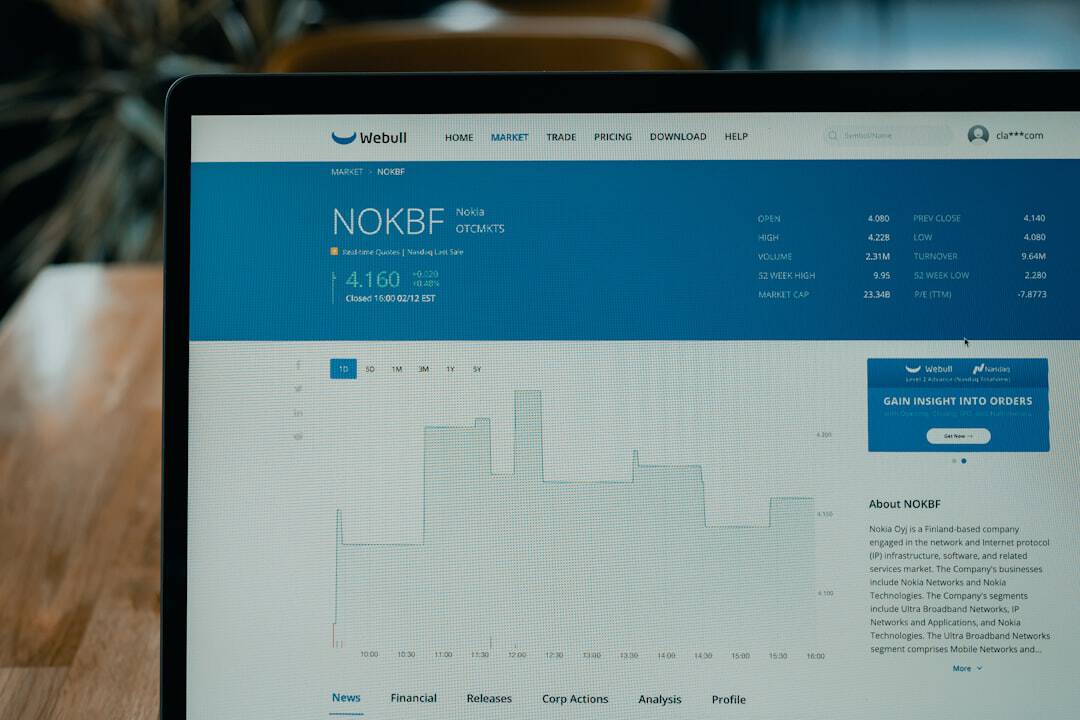Zero Trust Network Access (ZTNA) is a security model that assumes no user or device should be automatically trusted, regardless of their location or network connection. This approach requires strict identity verification for every entity attempting to access resources on a private network. ZTNA addresses the limitations of traditional security measures like VPNs and firewalls, which are inadequate for protecting modern cloud-based and mobile work environments.
By implementing ZTNA, organizations can ensure that only authorized users and devices can access specific applications and data, thereby reducing the risk of data breaches and unauthorized access. The adoption of ZTNA is increasing as organizations migrate to cloud-based applications and services, and as the traditional network perimeter becomes less defined due to remote work and mobile devices. This security model aligns with the “never trust, always verify” principle, which is crucial in today’s complex threat landscape.
ZTNA solutions provide secure access to applications and resources based on factors such as identity, device health, and context, rather than relying solely on network location. As a result, ZTNA has become an essential component of modern cybersecurity strategies, enabling organizations to protect their sensitive data and applications from unauthorized access and potential security threats.
Key Takeaways
- Zero Trust Network Access (ZTNA) is a security framework that requires strict identity verification for every person and device trying to access resources on a private network, regardless of whether they are sitting within or outside of the network perimeter.
- The Gartner Magic Quadrant is a research methodology and visual representation for evaluating the progress and position of companies in a specific, technology-based market.
- ZTNA has gained recognition in the Gartner Magic Quadrant as a critical technology for securing remote access and enabling secure access to applications and resources.
- Key players in the ZTNA Gartner Magic Quadrant include well-established security vendors as well as emerging startups, each offering unique solutions for implementing ZTNA.
- Trends and innovations in ZTNA include the integration of artificial intelligence and machine learning for advanced threat detection and the adoption of cloud-based ZTNA solutions for scalability and flexibility.
- The benefits of ZTNA include improved security posture, reduced attack surface, and enhanced user experience, while challenges include complexity of implementation and potential impact on network performance.
- The future outlook for ZTNA in the Gartner Magic Quadrant is promising, with continued innovation expected to address current challenges and drive widespread adoption of ZTNA solutions.
Understanding the Gartner Magic Quadrant
The Gartner Magic Quadrant is a research methodology and visual representation that assesses the competitive positioning of technology providers within specific markets. Gartner, a leading research and advisory company, evaluates vendors based on their completeness of vision and ability to execute, placing them in one of four quadrants: Leaders, Challengers, Visionaries, and Niche Players. The Magic Quadrant provides a comprehensive analysis of the market, helping organizations make informed decisions when selecting technology solutions and vendors.
Gartner’s assessment criteria include factors such as market understanding, sales strategy, innovation, product strategy, geographic strategy, and customer experience. The Magic Quadrant is a valuable resource for IT leaders and decision-makers seeking to understand the competitive landscape and identify vendors that align with their business needs and objectives. By leveraging Gartner’s insights, organizations can gain a deeper understanding of the strengths and weaknesses of technology providers, enabling them to make strategic technology investments that drive business growth and innovation.
ZTNA in the Gartner Magic Quadrant

In recent years, Zero Trust Network Access (ZTNA) has emerged as a critical technology category within the Gartner Magic Quadrant for Network Access Control. As organizations increasingly prioritize secure access to applications and resources, ZTNA solutions have gained significant attention from both vendors and customers. Gartner’s evaluation of ZTNA vendors considers factors such as their ability to provide secure access to applications, support for hybrid work environments, integration with identity and access management solutions, and overall market presence.
ZTNA vendors positioned in the Leaders quadrant demonstrate a strong ability to execute and a clear vision for the future of secure access technologies. These vendors typically offer comprehensive ZTNA solutions that address the evolving needs of modern enterprises, including support for multi-cloud environments, mobile workforce enablement, and advanced threat protection capabilities. Challengers in the ZTNA Magic Quadrant may have robust execution capabilities but may lag in terms of their vision for the future of ZTNA or their ability to innovate in response to emerging security threats and customer requirements.
Visionaries in the ZTNA Magic Quadrant are characterized by their innovative approach to secure access technologies, often introducing new capabilities or redefining the market with their unique vision for ZTNNiche Players may have specialized offerings or cater to specific use cases within the ZTNA market but may lack the comprehensive capabilities or market presence of Leaders or Challengers. Gartner’s assessment of ZTNA vendors provides valuable insights for organizations seeking to evaluate and select ZTNA solutions that align with their security requirements and strategic objectives.
Key Players in the ZTNA Gartner Magic Quadrant
| Company | Position in Magic Quadrant | Strengths | Caution |
|---|---|---|---|
| Zscaler | Leader | Global presence, strong cloud security platform | Complex pricing model |
| Akamai | Challenger | Strong network optimization capabilities | Limited feature set compared to leaders |
| Cloudflare | Visionary | Focus on performance and security | Less proven in enterprise deployments |
| Perimeter 81 | Niche Player | User-friendly interface, focus on SMBs | Limited scalability for large enterprises |
Several key players have emerged in the Zero Trust Network Access (ZTNA) Gartner Magic Quadrant, each offering unique capabilities and strengths in the secure access market. Leaders in the ZTNA Magic Quadrant typically include established cybersecurity vendors with a strong track record of delivering comprehensive ZTNA solutions that address the needs of modern enterprises. These vendors often offer advanced features such as adaptive access controls, continuous monitoring, and integration with identity and access management platforms.
Challengers in the ZTNA Magic Quadrant may include vendors with robust execution capabilities but may face challenges in terms of their ability to innovate or differentiate their offerings in a crowded market. Visionaries in the ZTNA space are known for their innovative approach to secure access technologies, often introducing new capabilities or redefining the market with their unique vision for ZTNNiche Players may cater to specific use cases within the ZTNA market or offer specialized features that address niche security requirements. As organizations evaluate ZTNA solutions, they should consider the strengths and weaknesses of key players in the market, as well as how these vendors align with their specific security needs and strategic objectives.
By leveraging Gartner’s assessment of ZTNA vendors, organizations can gain valuable insights into the competitive landscape and make informed decisions when selecting ZTNA solutions that best meet their secure access requirements.
Trends and Innovations in ZTNA
The Zero Trust Network Access (ZTNA) market is experiencing several key trends and innovations that are shaping the future of secure access technologies. One notable trend is the increasing adoption of cloud-based ZTNA solutions, which enable organizations to secure access to applications and resources regardless of their location or deployment model. Cloud-based ZTNA offerings provide scalability, flexibility, and ease of deployment, making them well-suited for modern enterprises with dynamic work environments.
Another trend in the ZTNA market is the convergence of secure access technologies with identity and access management (IAM) solutions. Vendors are integrating ZTNA capabilities with IAM platforms to provide seamless user authentication, authorization, and policy enforcement across diverse applications and resources. This integration enhances security posture while simplifying user experience, driving increased adoption of integrated ZTNA and IAM solutions.
In terms of innovation, ZTNA vendors are focusing on enhancing user experience through contextual access controls and adaptive policies. By leveraging contextual factors such as user behavior, device posture, location, and time of access, ZTNA solutions can dynamically adjust access policies to mitigate security risks without compromising user productivity. Additionally, advancements in threat detection and response capabilities are enabling ZTNA solutions to proactively identify and mitigate potential security threats within secure access sessions.
Benefits and Challenges of ZTNA

Zero Trust Network Access (ZTNA) offers several benefits for organizations seeking to enhance their security posture and enable secure access to applications and resources. One key benefit of ZTNA is its ability to provide granular access controls based on user identity, device posture, and contextual factors. This approach reduces the risk of unauthorized access and data breaches while enabling organizations to enforce least privilege access principles.
ZTNA also supports secure access for remote workers and mobile devices, addressing the challenges associated with traditional VPNs and perimeter-based security models. By providing secure access to applications regardless of user location or device type, ZTNA enables organizations to embrace flexible work arrangements while maintaining strong security controls. However, implementing ZTNA also presents challenges for organizations, including complexity in deployment and management.
Organizations must carefully plan their ZTNA deployment strategy to ensure seamless integration with existing infrastructure while minimizing disruption to user workflows. Additionally, ensuring consistent policy enforcement across diverse applications and resources can be challenging, requiring careful coordination between security teams and application owners. Another challenge is the need for ongoing monitoring and response capabilities to detect and mitigate potential security threats within secure access sessions.
Organizations must invest in advanced threat detection technologies and incident response processes to effectively safeguard against evolving cyber threats within their ZTNA environment.
Future Outlook for ZTNA in the Gartner Magic Quadrant
The future outlook for Zero Trust Network Access (ZTNA) in the Gartner Magic Quadrant is promising as organizations continue to prioritize secure access technologies to protect their sensitive data and applications. Gartner’s assessment of ZTNA vendors will likely evolve to reflect emerging trends such as cloud-based ZTNA solutions, integration with identity and access management platforms, and advanced threat detection capabilities. As organizations increasingly adopt hybrid work environments and cloud-based applications, Gartner may place greater emphasis on vendor capabilities related to supporting diverse deployment models and enabling seamless user experience across different types of applications.
Additionally, Gartner’s evaluation criteria for ZTNA vendors may evolve to include factors such as zero trust principles adherence, continuous monitoring capabilities, and integration with emerging technologies such as secure access service edge (SASE) platforms. The future outlook for ZTNA in the Gartner Magic Quadrant also includes an increased focus on vendor innovation in response to evolving security threats and customer requirements. Vendors that demonstrate a strong commitment to advancing secure access technologies through innovative features such as adaptive policies, threat intelligence integration, and user behavior analytics are likely to gain recognition in Gartner’s assessment of the ZTNA market.
In conclusion, Zero Trust Network Access (ZTNA) is a critical component of modern cybersecurity strategies, enabling organizations to protect their sensitive data and applications from unauthorized access and potential security threats. Gartner’s assessment of ZTNA vendors provides valuable insights for organizations seeking to evaluate and select ZTNA solutions that align with their security requirements and strategic objectives. As the ZTNA market continues to evolve, organizations should stay abreast of key trends, innovations, benefits, challenges, and future outlook for ZTNA in the Gartner Magic Quadrant to make informed decisions when selecting secure access technologies that best meet their business needs.
If you’re interested in exploring the potential of the metaverse, you may want to check out this article on Exploring the Metaverse: A New Frontier in Digital Reality. It delves into the concept of the metaverse and its implications for digital reality, which is a topic that aligns with the emerging trends in Zero Trust Network Access (ZTNA) highlighted in Gartner’s Magic Quadrant.
FAQs
What is ZTNA?
ZTNA stands for Zero Trust Network Access. It is a security framework that requires strict identity verification for every person and device trying to access resources on a private network, regardless of whether they are sitting within or outside of the network perimeter.
What is Gartner Magic Quadrant?
The Gartner Magic Quadrant is a research methodology and visual representation of a market’s direction, maturity, and participants. It evaluates technology providers based on their completeness of vision and ability to execute.
What is the significance of ZTNA Gartner Magic Quadrant?
The ZTNA Gartner Magic Quadrant provides an overview of the leading vendors in the Zero Trust Network Access market. It helps organizations evaluate and compare different ZTNA solutions based on Gartner’s analysis and criteria.
How can organizations use the ZTNA Gartner Magic Quadrant?
Organizations can use the ZTNA Gartner Magic Quadrant to identify and shortlist potential ZTNA solution providers based on their specific requirements and Gartner’s evaluation. It can help in making informed decisions when selecting a ZTNA solution for their network security needs.
What are the criteria used by Gartner to evaluate ZTNA vendors?
Gartner evaluates ZTNA vendors based on criteria such as completeness of vision, ability to execute, market understanding, sales and marketing execution, customer experience, and operations. These criteria help in assessing the overall capabilities and performance of ZTNA solution providers.











Leave a Reply